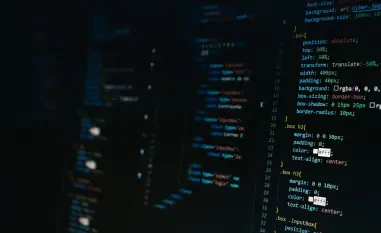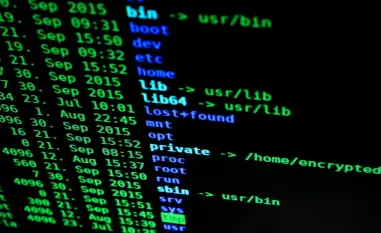Rising cybersecurity threats and attacks have led to risk assessment emerging as a critical safety technique used by professionals to analyze processes or systems for potential risks that could lead to hazardous conditions impacting humans, machines, and materials. In industrial cybersecurity contexts, risk assessment plays a pivotal role in identifying, evaluating, and mitigating potential threats that could compromise the integrity, availability, and confidentiality of industrial control systems (ICS) and operational technology (OT). Given that sectors such as manufacturing, energy, and transportation are increasingly interconnected, they become more vulnerable to cyber-attacks. This interconnectedness underscores the importance of thorough risk assessments to protect these critical infrastructures. To address risk assessment effectively, a multi-step approach is typically employed.
1. Asset Identification
Organizations must conduct an inventory of hardware and software components within their ICS and OT environments, understand their functions and interdependencies. This step is foundational, as it highlights critical systems and potential entry points for cyber threats. Proper asset identification involves cataloging all physical devices, software applications, and network components in use. Additionally, organizations must consider the operational significance of each asset and how they contribute to overall system functionality. By thoroughly understanding the roles and dependencies of each component, potential weaknesses and susceptibilities can be more easily pinpointed.
Effective asset identification requires collaboration across various departments, including IT professionals, operations managers, and security analysts. This cohesive approach ensures that no critical assets are overlooked and that the inventory remains comprehensive and accurate. Moreover, keeping the asset inventory updated is crucial, as it reflects any changes in infrastructure or the introduction of new technologies. Identifying key assets early in the risk assessment process facilitates better planning for subsequent threat and vulnerability analyses, which are necessary to develop robust cybersecurity defenses.
2. Threat Identification
This involves identifying potential adversaries and their capabilities, intentions, and methods. It includes understanding common attack vectors, such as malware, phishing, and insider threats, which could exploit vulnerabilities within the system. To effectively identify threats, organizations must keep abreast of the latest cyber threat intelligence and trends, leveraging information from sources like government agencies, cybersecurity firms, and industry associations.
Threat identification also entails conducting thorough assessments of historical incidents and known vulnerabilities that have affected similar industries. This historical perspective provides valuable context and helps anticipate future threats. By evaluating potential adversaries, such as nation-state actors, cybercriminals, and hacktivists, organizations gain insights into the modus operandi, tools, and techniques these threat actors might employ. Understanding these patterns enables companies to tailor their defensive strategies precisely to counter specific threats, significantly enhancing their preparedness and resilience.
3. Vulnerability Assessment
Known weaknesses within the ICS and OT environments are identified. This can involve scanning for outdated software, misconfigurations, and other security gaps that could be exploited by threats. Organizations must perform comprehensive audits, employing a combination of automated tools and manual testing procedures to uncover vulnerabilities. Conducting penetration tests and vulnerability scans regularly helps detect and address security flaws before they can be exploited by malicious actors. Establishing a remediation plan to address identified vulnerabilities is a critical extension of the assessment process.
Organizations should prioritize vulnerabilities based on their potential impact and likelihood of being exploited. This prioritization ensures that the most pressing issues receive immediate attention, reducing the overall risk profile. Beyond technical measures, organizations should also assess vulnerabilities related to human factors, such as employee conduct and adherence to security protocols. By addressing both technical and human vulnerabilities, companies create a resilient security posture that can withstand a variety of threats.
4. Risk Analysis
This phase assesses the likelihood and impact of identified threats exploiting vulnerabilities. It often involves qualitative and quantitative methods to prioritize risks based on their potential severity. High-priority risks are those that could cause significant operational disruptions, safety hazards, or financial losses. Conducting risk analysis helps organizations to allocate resources effectively, focusing on mitigating the most critical threats. Methods such as SWOT analysis (Strengths, Weaknesses, Opportunities, Threats) and probabilistic risk assessment are commonly used to provide a structured approach to risk evaluation.
Incorporating feedback from stakeholders during the risk analysis process is vital. Their unique insights contribute to a comprehensive understanding of the environment and the potential consequences of various risks. Furthermore, continuous re-evaluation and updating of risk assessments are crucial as new threats and vulnerabilities emerge. This iterative approach ensures that risk management strategies remain relevant and effective, allowing organizations to adapt to an ever-changing threat landscape promptly.
5. Mitigation Strategies
Strategies are developed to address the highest risks. This can include implementing advanced security measures such as network segmentation, access controls, intrusion detection systems, and regular patch management. Additionally, employee training and awareness programs are critical to reducing human error and insider threats. Organizations should invest in up-to-date security technologies and best practices to fortify their defenses. These measures can be complemented by establishing clear security policies and incident response plans tailored to the unique requirements of the industrial sectors.
Employee training programs should emphasize the importance of cybersecurity and empower personnel to identify and report suspicious activities. Creating a culture of security awareness within the organization fosters vigilance and accountability among employees. Integrating security considerations into business operations at every level ensures that proactive steps are taken to mitigate risks effectively. Regular drills and simulations of cyber incidents help employees understand their roles and responsibilities in responding to security breaches, reinforcing preparedness.
6. Continuous Monitoring and Review
Continuous monitoring involves ongoing vigilance over ICS and OT environments to detect and respond to emerging threats quickly. This includes real-time tracking of network activity, system performance, and user behavior to identify anomalies or suspicious patterns indicative of cyber-attacks. Organizations should implement robust monitoring tools and solutions to provide visibility into their operational landscape.
Regular reviews of risk assessment processes and security measures ensure that they remain effective and current. This includes updating threat and vulnerability analyses to account for new technologies, evolving threats, and changes within the organization. Continuous improvement through lessons learned from past incidents and industry best practices helps organizations stay ahead of potential threats and maintain a strong security posture.













